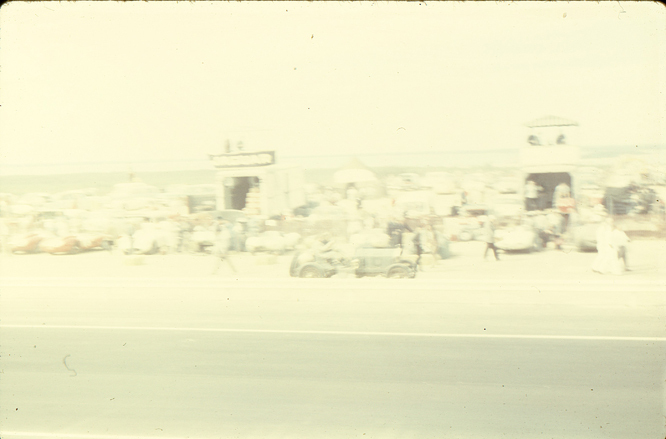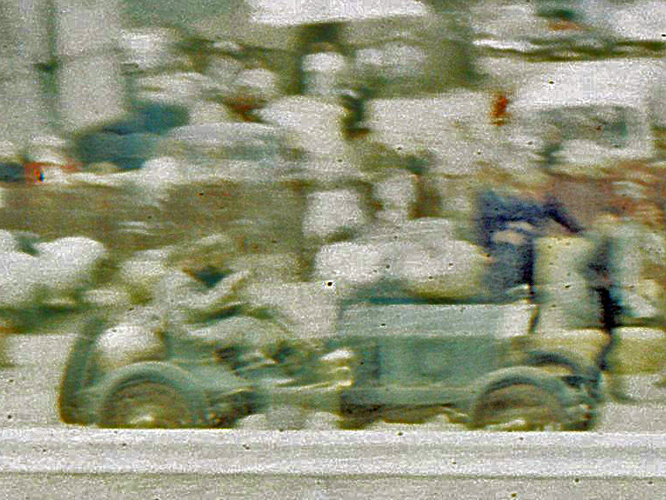A couple of weeks ago Steve e-mailed me “Those four slides were put in a “special place” by my dad for good reason. I scanned them, and they are fuzzy. There’s no reason for me to send these outcasts to you.”
I replied in typical ‘Prisoner’ fashion “Fuzzy out casts or not I am curious, remember ‘we want information !’ :-)”
Here is one of those 54 year old fuzzy slides that Steve’s Dad Ed took at Bridgehampton on the 20th July 1957 and what a story it has to tell.
After a few adjustments and a little cropping, I posted some copies on a new ‘Fuzzy long-shot identity ?‘ thread at The Nostalgia Forum and it took all of twenty minuets to get a response from Tim Murray that we are looking at a 1906 Locomobile Old 16 now 105 years old.
The Locomobile then owned by well known motoring artist Peter Helck is probably being driven by George Robertson who manhandled this vehicle weighing less than 1200 kgs / 2645 lbs around 11 laps of a 23.4 mile road course on Long Island to cover a distance of 258 miles in 4 hours averaging 67 mph to win the 1908 Vanderbuilt Cup by nearly 2 minuets thus becoming the first American to win an international motor race.
Going into the white flag lap George held a lead of over 4 minuets but instead of easing the pace he pressed on so hard he lost control of Old No: 16 and left the track and damaged a tire. In order to return to the race it had to be replaced on the rim a feat George and his riding mechanic Glenn Ethridge, required as a living on board fuel pump to keep the fuel pressure up amongst other things, managed in ‘just’ 2 minuets 10 seconds !
Visit the excellent Vanderbuilt Cup Race website for more fascinating information and pictures on the Vanderbuilt Cup Races, as I understand it Old No: 16 is still a runner, it’s flame spitting 90hp 4 cylinder 16,200 cc 989 cui motor can still push the car to 90 mph. Here is a link to a video of the car running in 2008.
Old No: 16 became an instant legend in 1908 and has been kept in full working condition ever since, it has never been restored and currently resides at the Henry Ford Museum in Dearborn Michigan.
23 year old George Robertson won several races before driving with a journalist in preparation for the 1910 Vanderbuilt Cup. Entering a corner the Journalist panicked and clutched George causing an accident in which George’s right arm was so seriously injured he was unable to drive the heavy vehicles of the day competitively ever again.
My thanks to Ed and Steve Arnaudin for the photograph, Tim Murray, Doug ‘Meat and Drink’ Nye, Marticelli and D-type for all chiming in with useful information.
My thanks to Ed Arnaudin for a his fascinating series of sports car photographs it has been my privilege to research and share with you particularly over the last week or so, there are a couple more left that I will be sharing in due course, meantime I look to forward to sharing Ed’s real passion, for the Indy 500 in the coming weeks as we head into the 100th anniversary
of the running of the Indy 500.
Hope you have enjoyed today’s Fuzzy Long Shot edition of ‘Getting a lil’ psycho on tyres’ and that you’ll join me again tomorrow for a look at a truck built in the Australian outback so big it requires two General Lee tank motors to get up to speed. Don’t forget to come back now !





